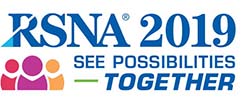

ParticipantsAbeer H. Abdel Hameed, MBChB, Houston , TX (Presenter) Nothing to Disclose
Beatriz E. Adrada, MD, Houston, TX (Abstract Co-Author) Nothing to Disclose
Benjamin Musall, BS, Houston, TX (Abstract Co-Author) Nothing to Disclose
Jingfei Ma, PhD, Houston, TX (Abstract Co-Author) Royalties, Siemens AG; Royalties, General Electric Company; Consultant, C4 Imaging
Rosalind P. Candelaria, MD, Houston, TX (Abstract Co-Author) Nothing to Disclose
Wei T. Yang, MD, Houston, TX (Abstract Co-Author) Royalties, Reed Elsevier
Kenneth Hess, PhD, Houston, TX (Abstract Co-Author) Nothing to Disclose
Lumarie Santiago, MD, Houston, TX (Abstract Co-Author) Nothing to Disclose
Gary J. Whitman, MD, Houston, TX (Abstract Co-Author) Nothing to Disclose
H. Carisa Le-Petross, MD, FRCPC, Houston, TX (Abstract Co-Author) Nothing to Disclose
Tanya W. Moseley, MD, Houston, TX (Abstract Co-Author) Consultant, Hologic, Inc
Elsa M. Arribas, MD, Houston, TX (Abstract Co-Author) Scientific Advisory Board, Volumetric Biotechnologies, Inc; Stockholder, Volumetric Biotechnologies, Inc
Deanna L. Lane, MD, Houston, TX (Abstract Co-Author) Nothing to Disclose
Marion E. Scoggins, MD, Houston, TX (Abstract Co-Author) Institutional Research Grant, General Electric Company
Jessica W. Leung, MD, Houston, TX (Abstract Co-Author) Scientific Advisory Board, Subtle Medical
Mark D. Pagel, PhD, Houston, TX (Abstract Co-Author) Nothing to Disclose
Ken-Pin Hwang, PHD, Houston, TX (Abstract Co-Author) Nothing to Disclose
Jong Bum Son, PhD, Houston, TX (Abstract Co-Author) Nothing to Disclose
Jennifer Litton, Houston, TX (Abstract Co-Author) Nothing to Disclose
Senthil Damodaran, Houston, TX (Abstract Co-Author) Nothing to Disclose
Bora Lim, MD, Houston , TX (Abstract Co-Author) Nothing to Disclose
Jason White, Houston, TX (Abstract Co-Author) Nothing to Disclose
Hagar S. Mahmoud, MBBCh, Alexandria, Egypt (Abstract Co-Author) Nothing to Disclose
Vicente Valero, MD, Houston, TX (Abstract Co-Author) Nothing to Disclose
Alastair Thompson, Houston, TX (Abstract Co-Author) Nothing to Disclose
Stacy Moulder, MD, Houston, TX (Abstract Co-Author) Research funded, AstraZeneca PLC Research funded, F. Hoffmann-La Roche Ltd Research funded, Oncothyreon Research funded, Novartis AG Research funded, Merck KGaA
Gaiane M. Rauch, MD, PhD, Houston, TX (Abstract Co-Author) Nothing to Disclose
abeerhamed2009@gmail.com
PURPOSETo determine the predictive value of tumor necrosis at baseline DCE-MRI on treatment response to NACT in TNBC patients.
METHOD AND MATERIALSThis IRB-approved study includes 85 patients with stage I-III TNBC, who had baseline MRI, underwent NACT followed by definitive surgery. Tumors were segmented on the early phase subtraction of DCE-MRI. Necrosis was identified as non-enhancing intra-tumoral tissue on DCE with high T2 signal and shine through on the Apparent Diffusion Coefficient (ADC). Necrotic tumors were segmented with and without inclusion of necrotic regions. The longest dimension of the tumors, volume and percent of necrosis were calculated from contours. Metrics of necrosis were compared with pathologic complete response (pCR) or non-pCR in tissue evaluated after surgical resection, T stage of the tumor, and regional lymph node (LN) involvement at staging and at surgery (positive vs negative). Receiver operating characteristic (ROC) curves, Wilcoxon rank sum tests, and odds ratios (OR) were used for analysis.
RESULTSNecrosis was seen in 31 pts (36.5 %), median volume was 4.8 cm3 (range 0.7-945 cm3), median percent was 22.8 % (range 4.6-86 %). pCR occurred in 37 pts (43.5%). There was no significant association between pCR and presence of necrosis (OR = 1.4, 95% CI (0.6, 3.3), P=0.49). The volume and percent of necrosis were not significantly different between pts with pCR and non-pCR [AUROCC = 0.52, 95% CI (0.40, 0.65); p=0.69; AUROCC = 0.54, 95% CI (0.41, 0.66) p = 0.52, respectively]. No significant association between T stage of the TNBC and presence of necrosis [OR = 2.3, 95% CI (0.6, 8.8) p = 0.23] was found. Necrotic lesions were seen in 21% (3/14) T1 lesions, 39% (17/44) T2 and 37% (10/27) T3-T4 lesions. There was no significant association between baseline necrosis and LN involvement at staging or at surgery [OR = 0.9, 95% CI = (0.4, 2.1), p= 0.73; OR = 0.5, 95% CI = (0.1, 1.4), p=0.16 respectively]. Tumor necrosis was seen in 38% (15/39) LN+ and in 35% (16/46) LN- pts at staging; 41% (26/64) LN+ and 24% (5/21) LN- pts at surgery.
CONCLUSIONTumor necrosis at baseline in TNBC patients was not associated with pCR or nodal involvement and was not a predictor of response to NACT.
CLINICAL RELEVANCE/APPLICATIONOur study found that tumor necrosis at baseline imaging in TNBC patients had no association with their treatment response and therefore should not affect their treatment planning.